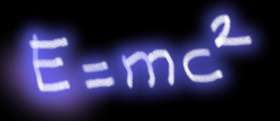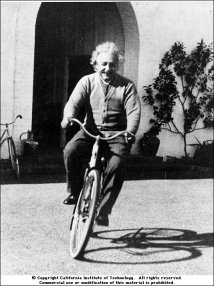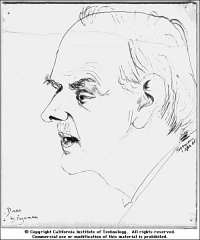


Einstein on his bicycle

Dirac as seen by R. Feynman
P. Dirac Nobel Lecture
From 1928 to 1995
1928: the
beginning
The history of antimatter begins
with a young physicist named Paul Dirac
and the strange implications of a mathematical equation...
It was the beginning of the 20th century, an exciting time when the very foundations of physics were shaken by the appearance of two important new theories: relativity and quantum mechanics.
In 1905 Albert Einstein unveiled his theory of Special Relativity, explaining the relationship between space and time, and between energy and mass in his famous equation E=mc2. Meanwhile experiments had revealed that light sometimes behaved as a wave, but other times behaved as if it were a stream of tiny particles. Max Planck proposed that each light wave must come in a little packet, which he called a "quantum": this way light was not just a wave or just a particle, but a bit of both.
By the 1920s, physicists were trying to apply the same concept to the atom and its constituents, and by the end of the decade Erwin Schrodinger and Werner Heisenberg had invented the new quantum theory of physics. The only problem now was that quantum theory was not relativistic - meaning the quantum description worked only for particles moving slowly, and not for those at high (or "relativistic") velocity, close to the speed of light.
In 1928, Paul Dirac solved the problem: he wrote down an equation, which combined quantum theory and special relativity, to describe the behaviour of the electron. Dirac's equation won him a Nobel Prize in 1933, but also posed another problem: just as the equation x2=4 can have two possible solutions (x=2 OR x=-2), so Dirac's equation could have two solutions, one for an electron with positive energy, and one for an electron with negative energy. But in classical physics (and common sense!), the energy of a particle must always be a positive number!
Dirac interpreted this to mean that for every particle that exists there is a corresponding antiparticle, exactly matching the particle but with opposite charge. For the electron, for instance, there should be an "antielectron" identical in every way but with a positive electric charge. In his Nobel Lecture, Dirac speculated on the existence of a completely new Universe made out of antimatter!
|
(From
1928 to 1995 - page 1 of 5)
| Next > |



